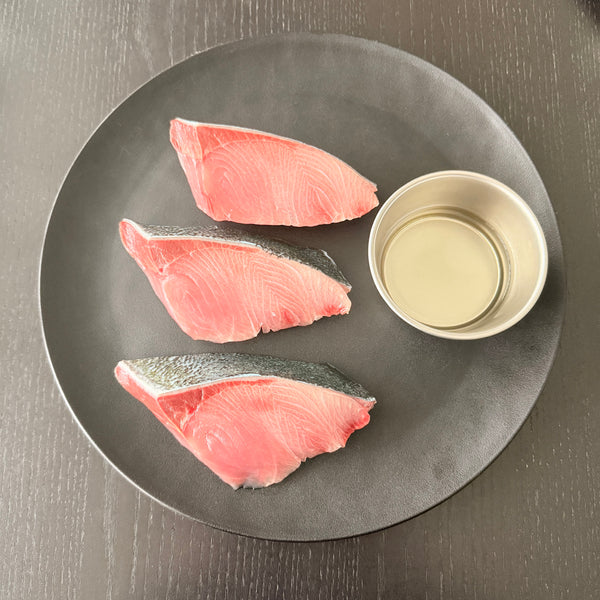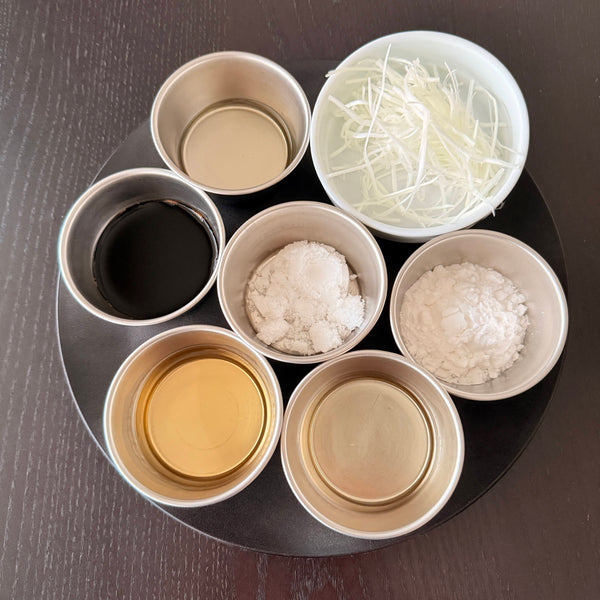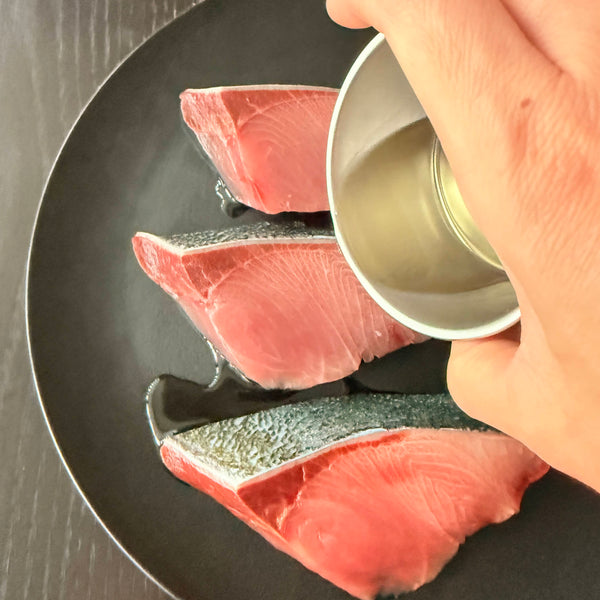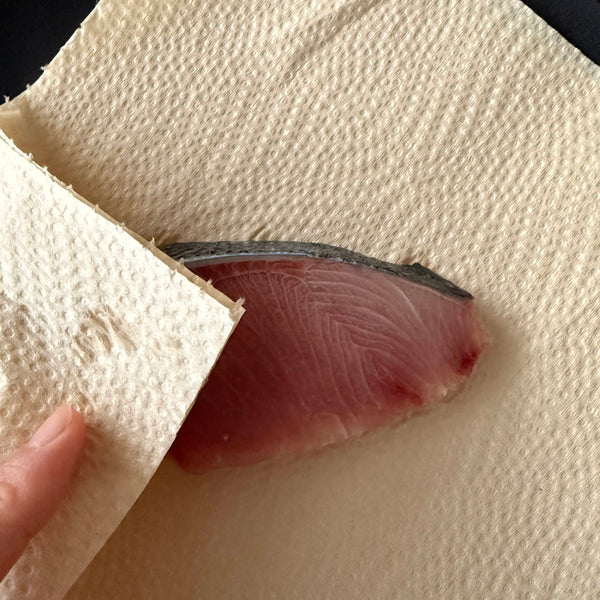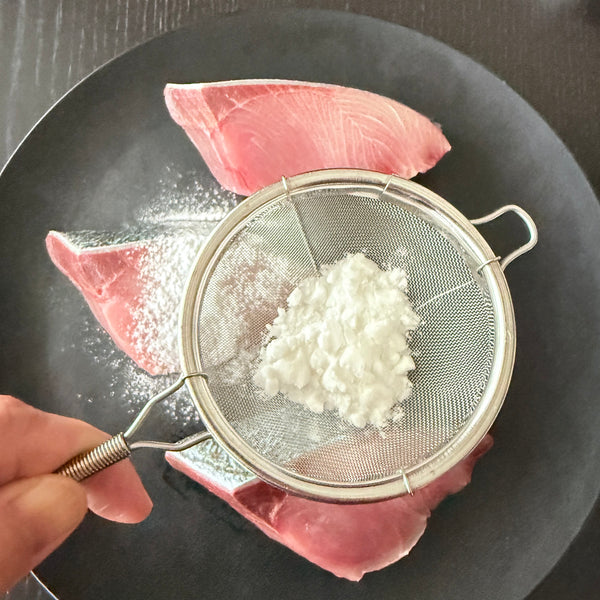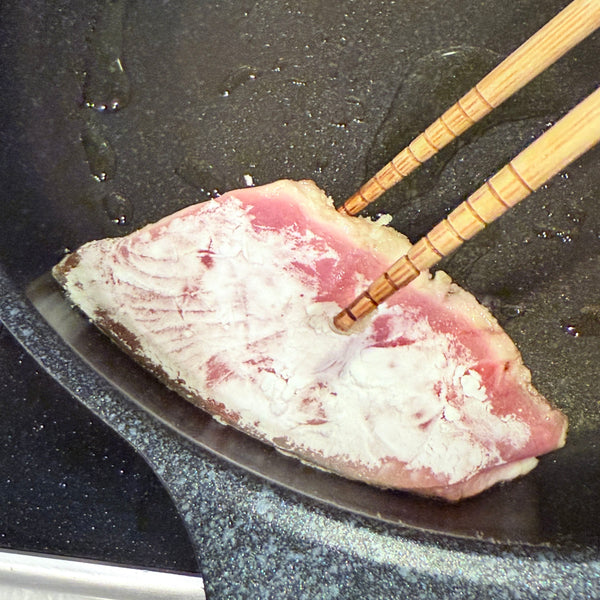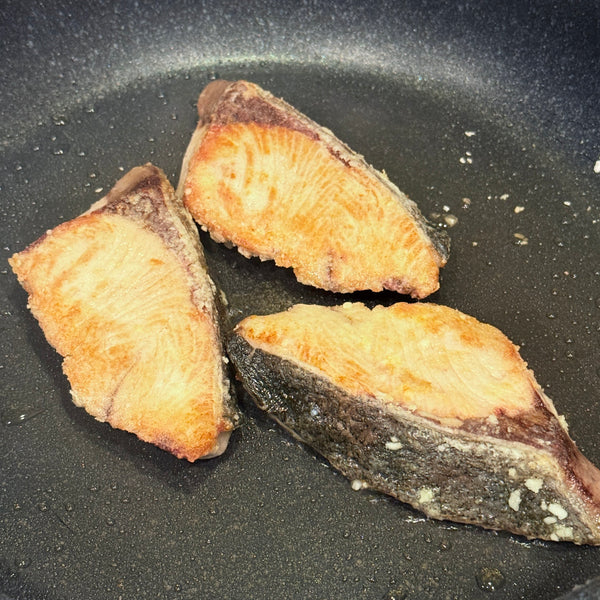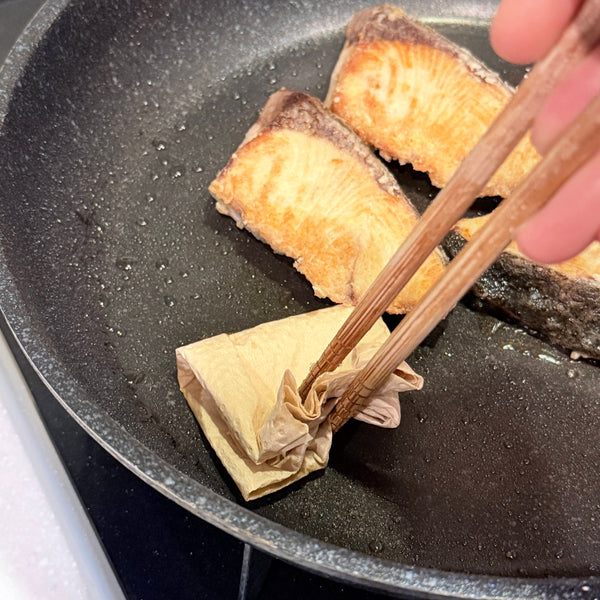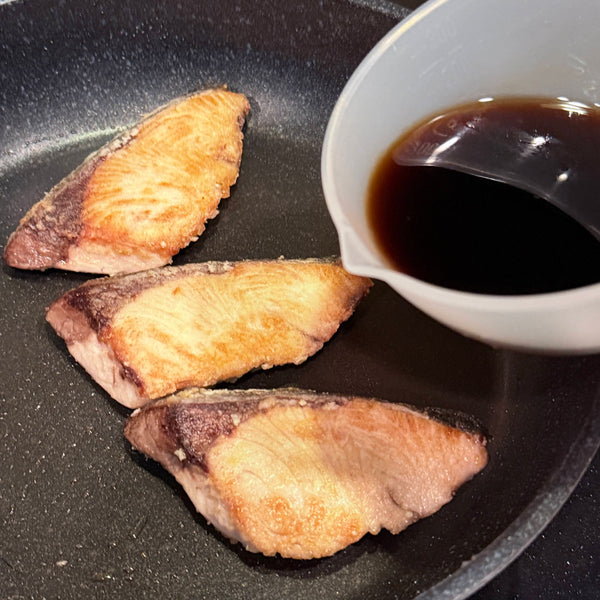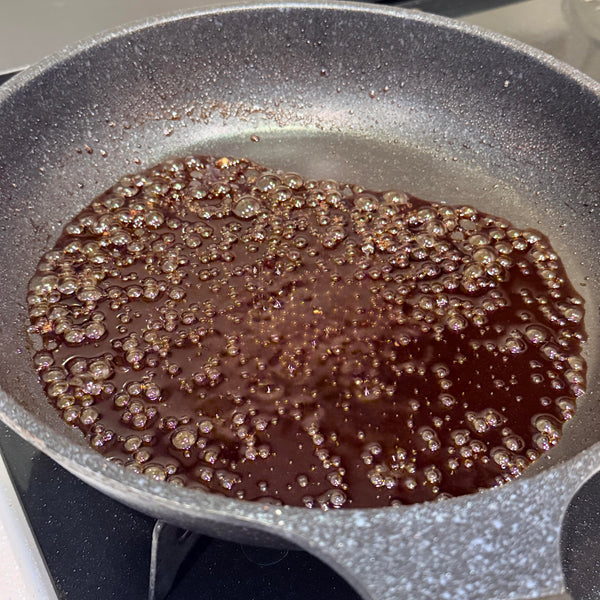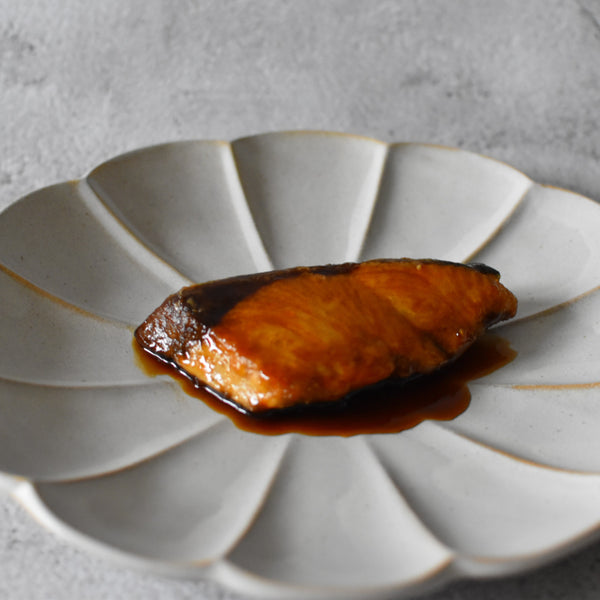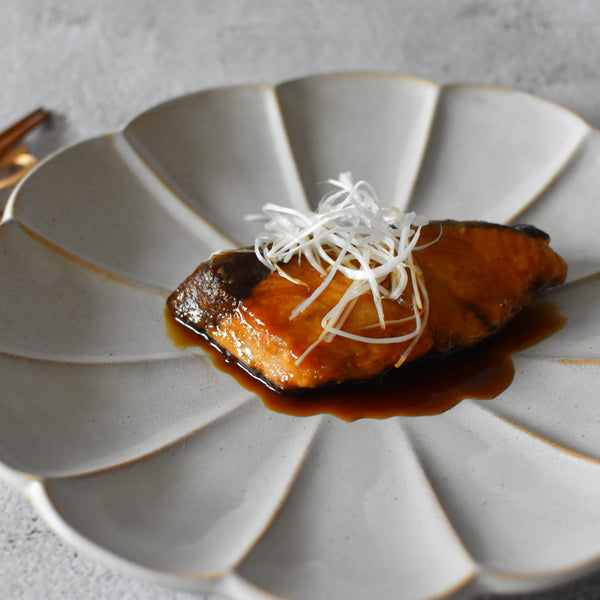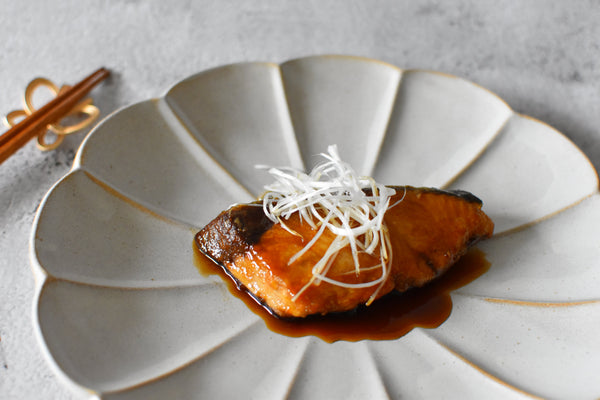
Yellowtail fish teriyaki (or buri no teriyaki) is a widely popular main dish throughout Japan. It’s enjoyed as an everyday meal as well as a special dish for an osechi during the New Year season, especially in the Kansai area. The savory teriyaki sauce perfectly complements the fatty meat of buri, which almost melts in your mouth!
Buri, known as yellowtail fish in English, is very popular in Japan, but it might be unfamiliar to some. Let me explain about it first. Yellowtail is a migratory fish found in the oceans around Japan and is known for its spindle-shaped body and distinctive yellow stripes. Its rich, buttery flavor is widely enjoyed in Japanese cuisine, both raw and cooked.
Historically, buri has been an important fish for Japanese people. Its seasonal availability in winter coincides with the end and beginning of the year in Japan, making winter buri especially praised for its exceptional taste and high nutritional value. In some regions of Japan, the tradition of offering buri as a gift or a god’s offering remains strong to this day.
In Japan, yellowtail is commonly sold as fillets, so it’s important to remove the unwanted fishy smell beforehand. There are three common methods:
-
Sprinkling salt – sprinkle salt and let it sit for a few minutes. Then gently remove moisture from the surface, which contains a fishy odor, either by wiping with paper towels or rinsing and then wiping.
-
Sprinkling cooking sake – sprinkle cooking sake, let sit, then remove moisture with paper towels. This method eliminates the fishy odor and adds umami flavor from sake.
-
Dipping into hot water – prepare a bowl of hot water and dip the yellowtail fillet for a few seconds. Transfer immediately to cold water, remove any dirt with fingers, then pat dry with paper towels. This method also tightens the flesh, preventing the fish from breaking while cooking.
In this recipe, I chose method 2. In the buri daikon recipe, I also combine methods 1 and 3, which you can check if interested.
Once the fishy smell is removed, lightly coat the fillet with potato starch or flour. This prevents the fish from drying out and helps the seasoning cling better, enhancing the flavor. Cooking thoroughly is important, but avoid overcooking as the fish gets firmer. Follow the exact cooking time and methods below to achieve perfect buri teriyaki.
The key to an amazing buri teriyaki is the teriyaki sauce, made from soy sauce, mirin, sake, and sugar. This simple blend is versatile, and you can adjust proportions to your taste.
Once you master perfect teriyaki sauce, you can try it with other fish like swordfish or salmon for the teriyaki salmon recipe. Also, explore other delicious Japanese recipes like sakana no nitsuke and teriyaki chicken.

